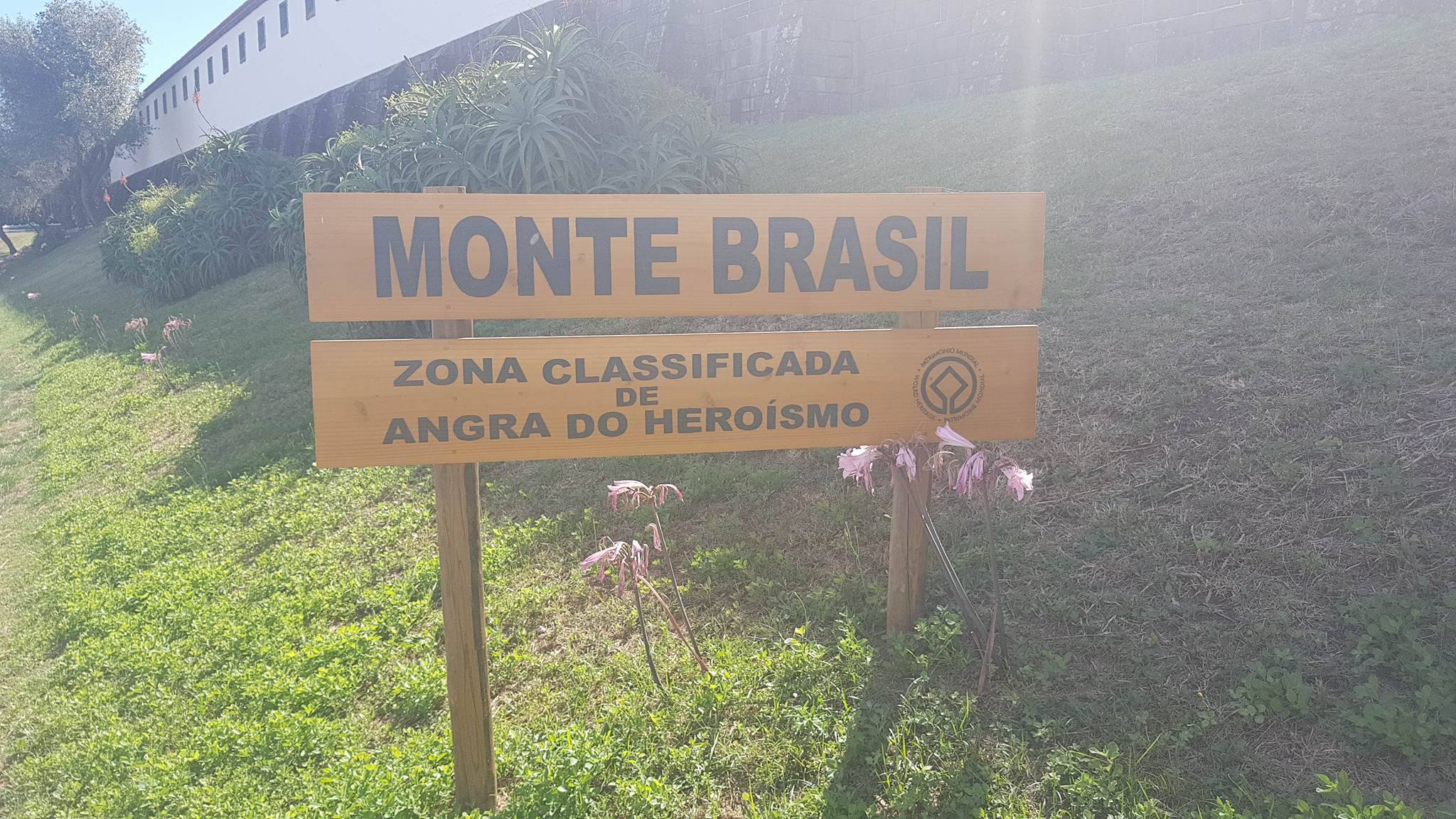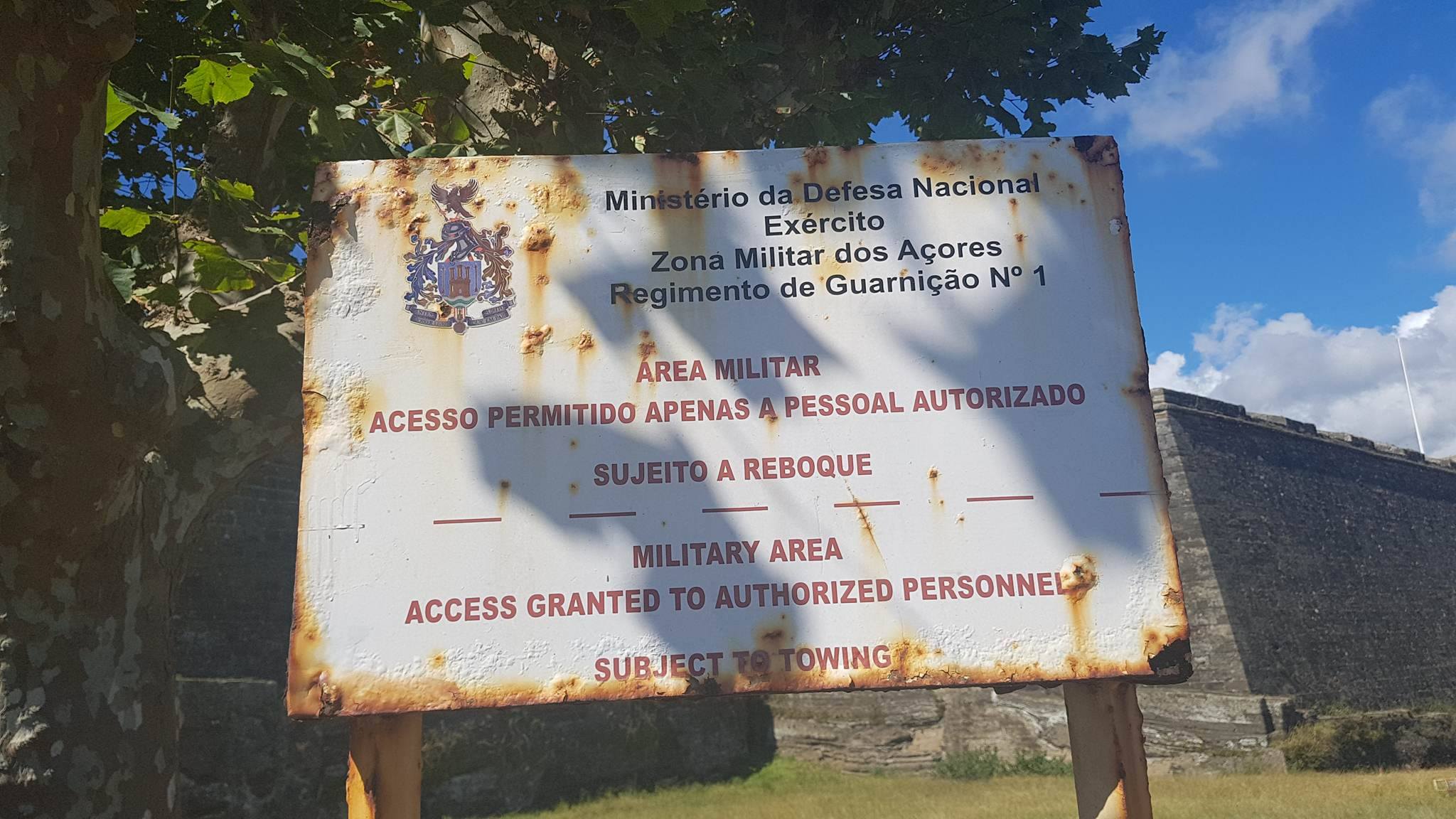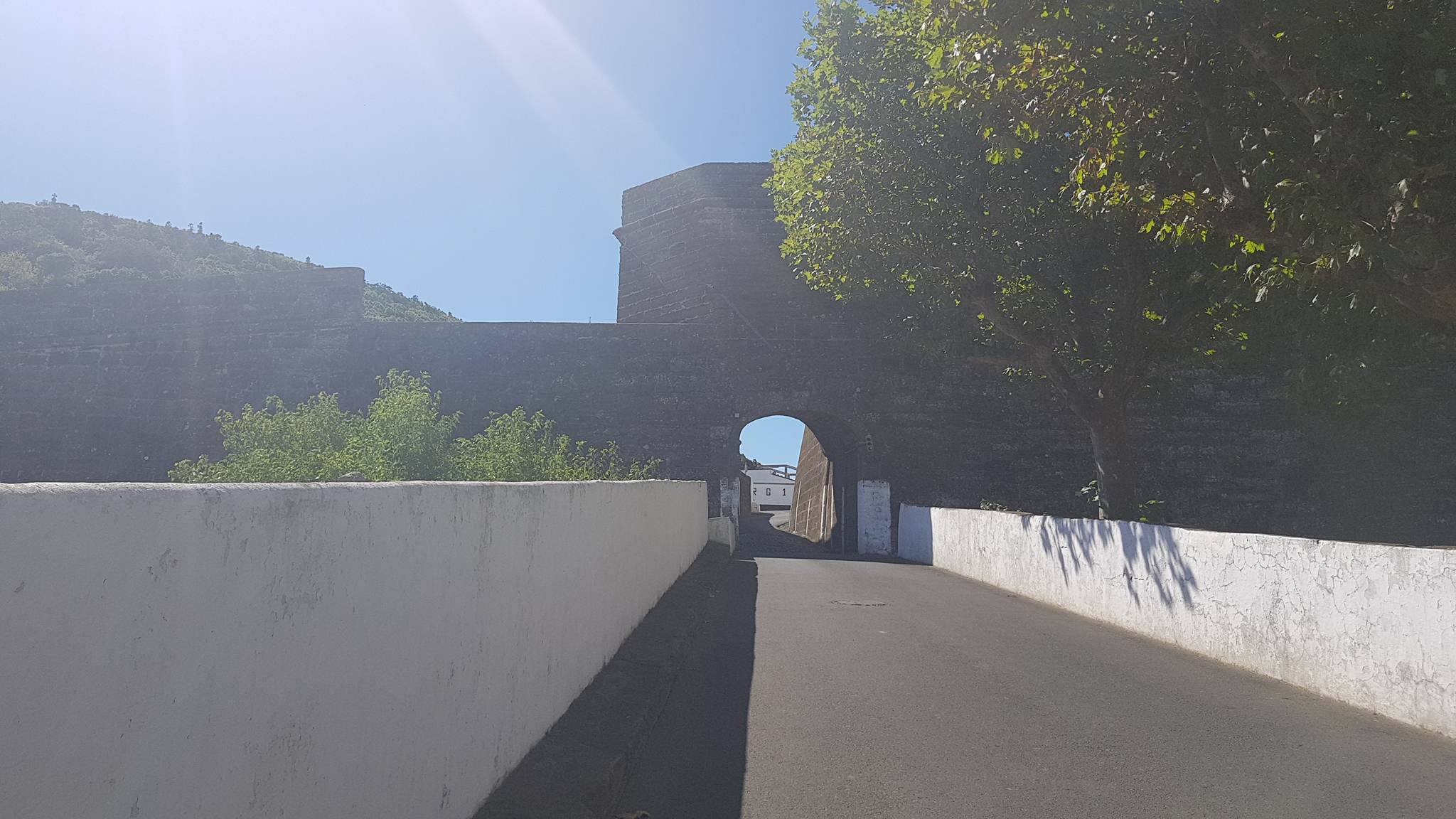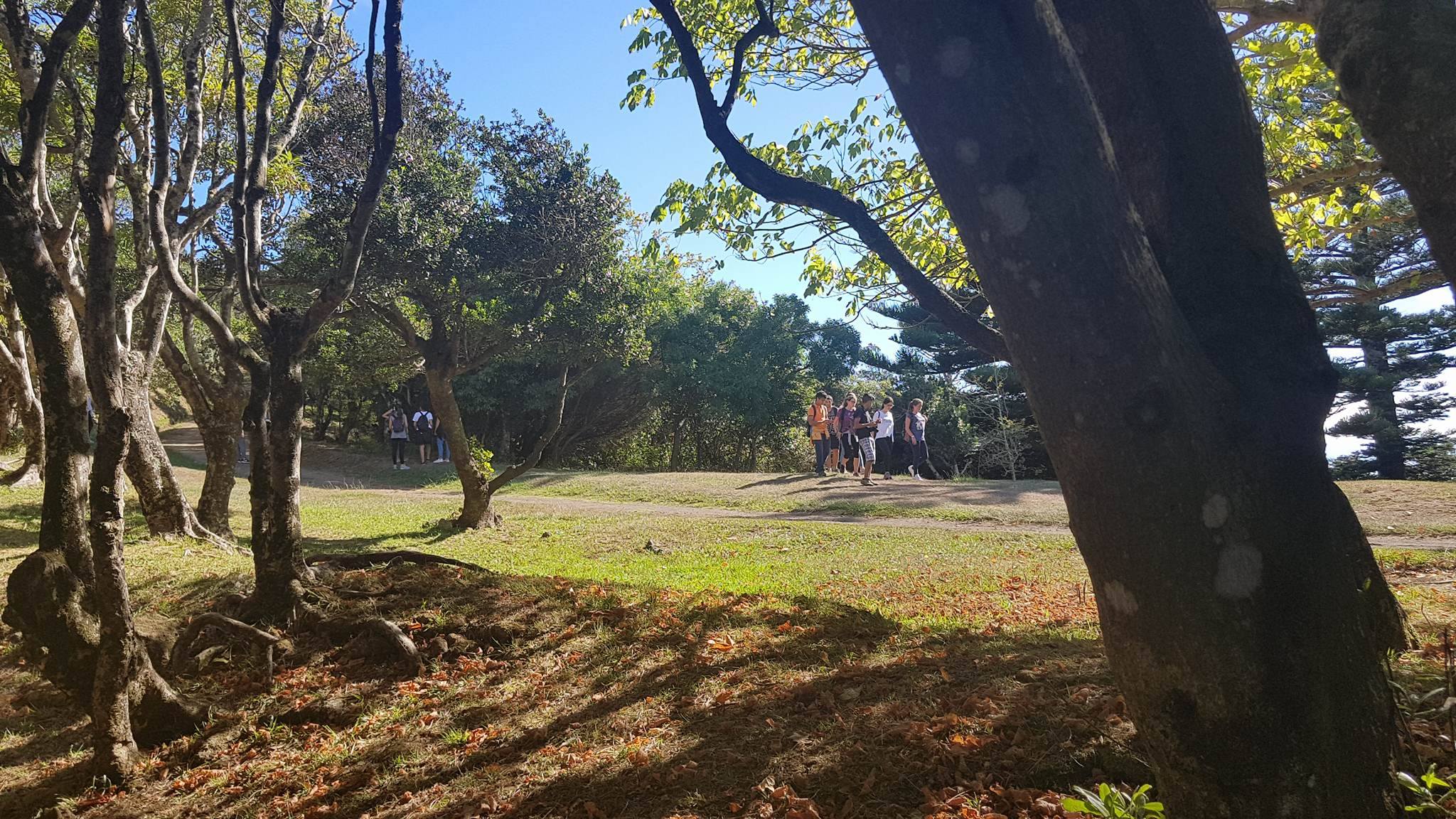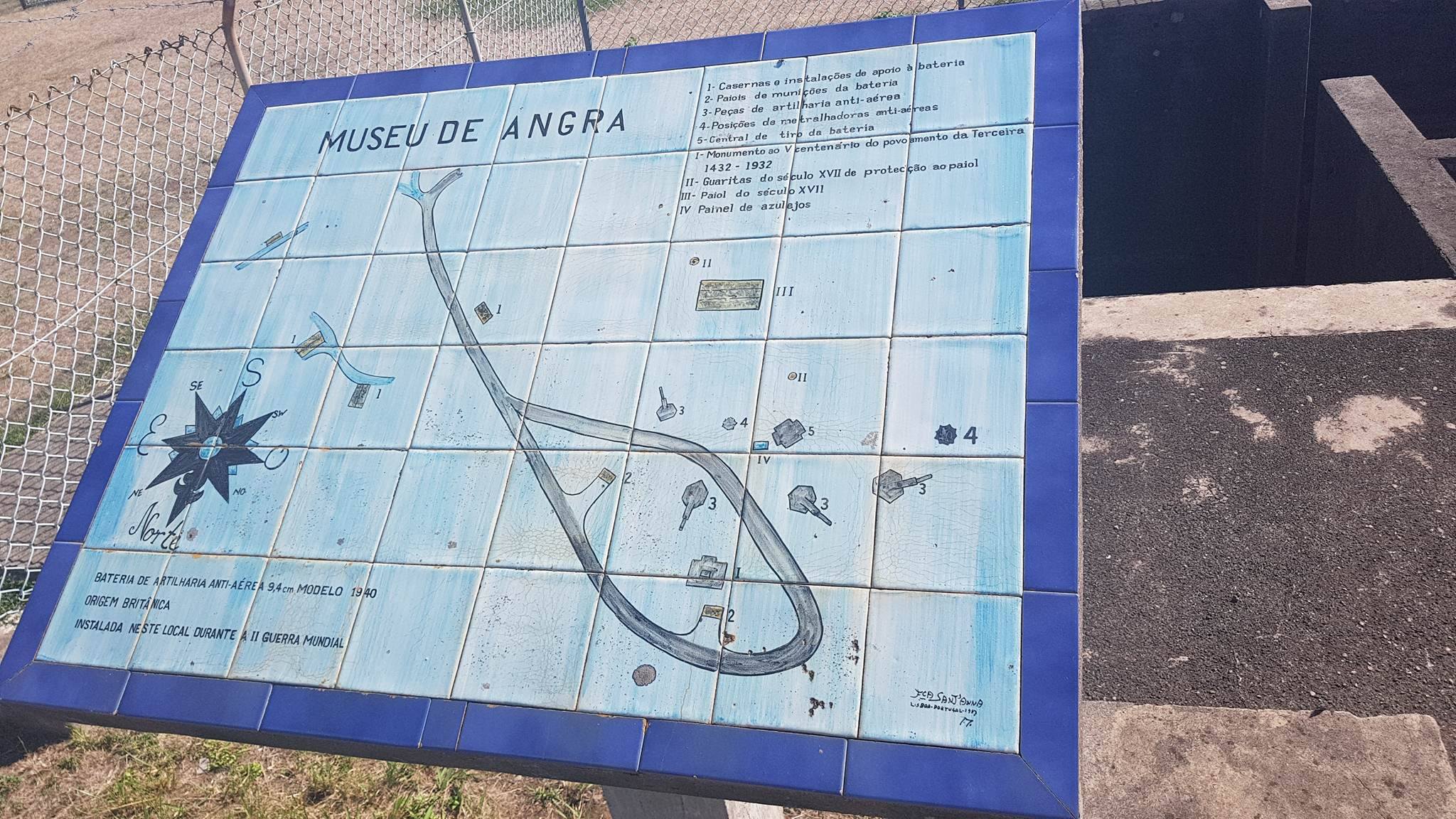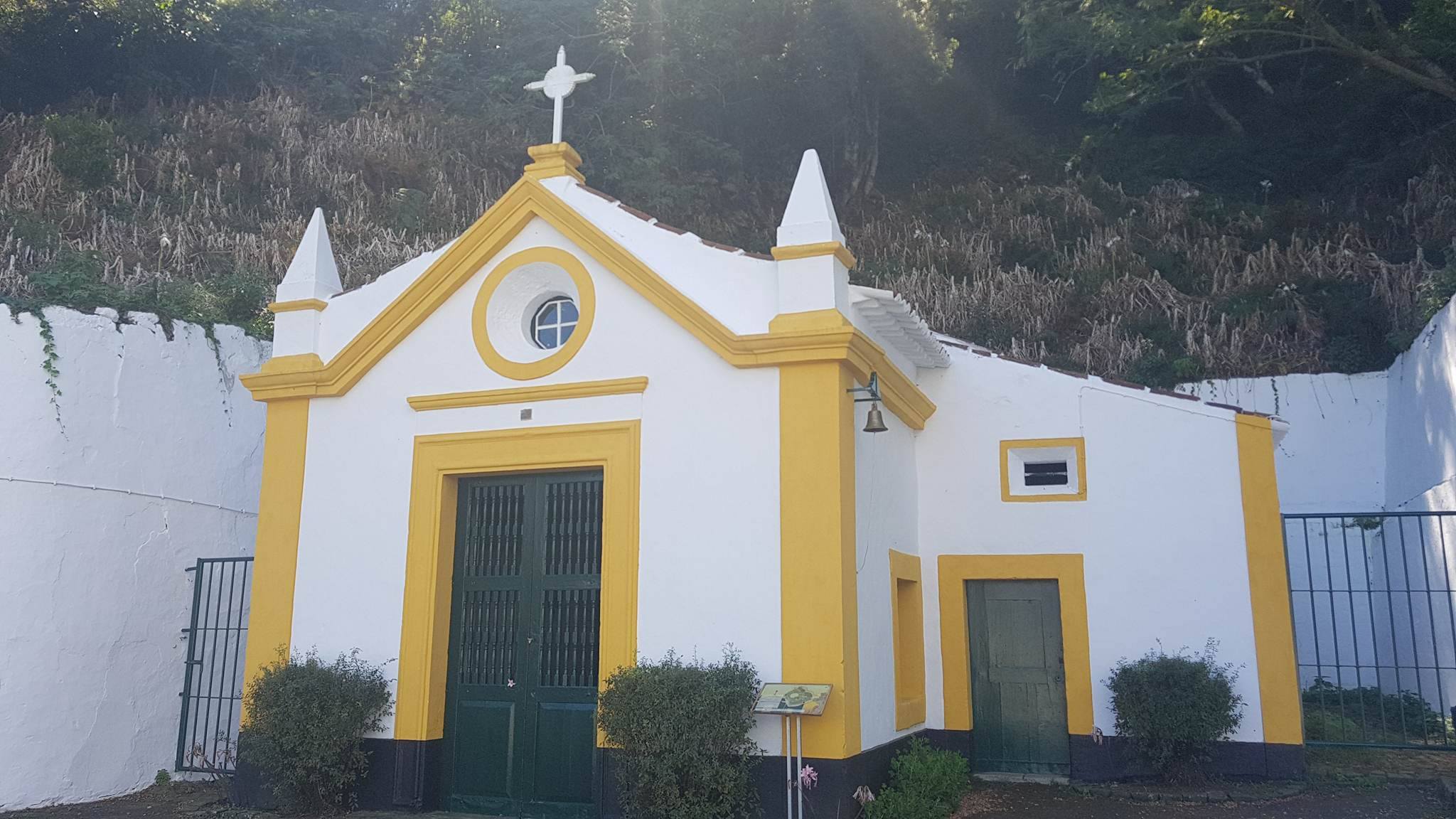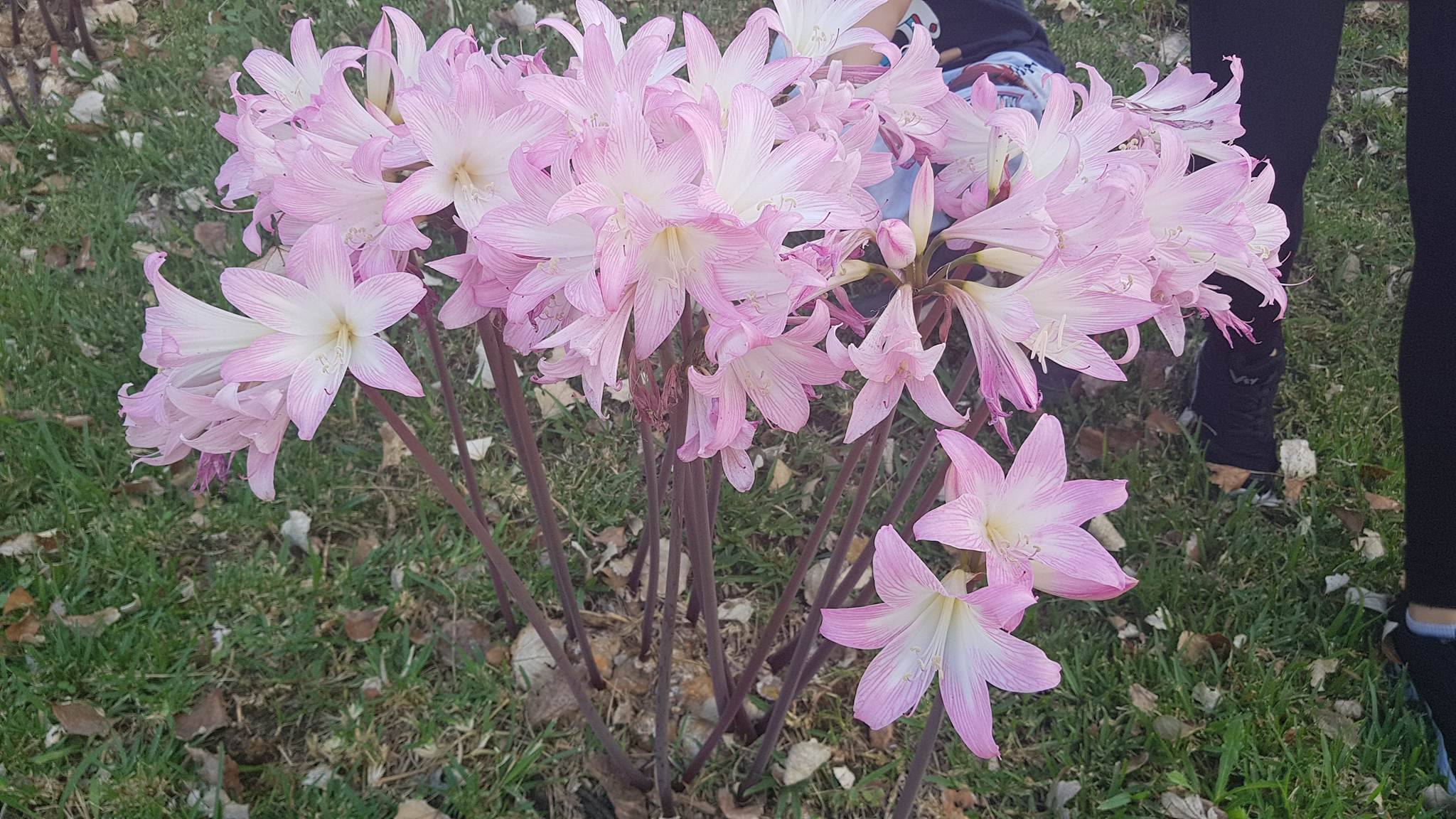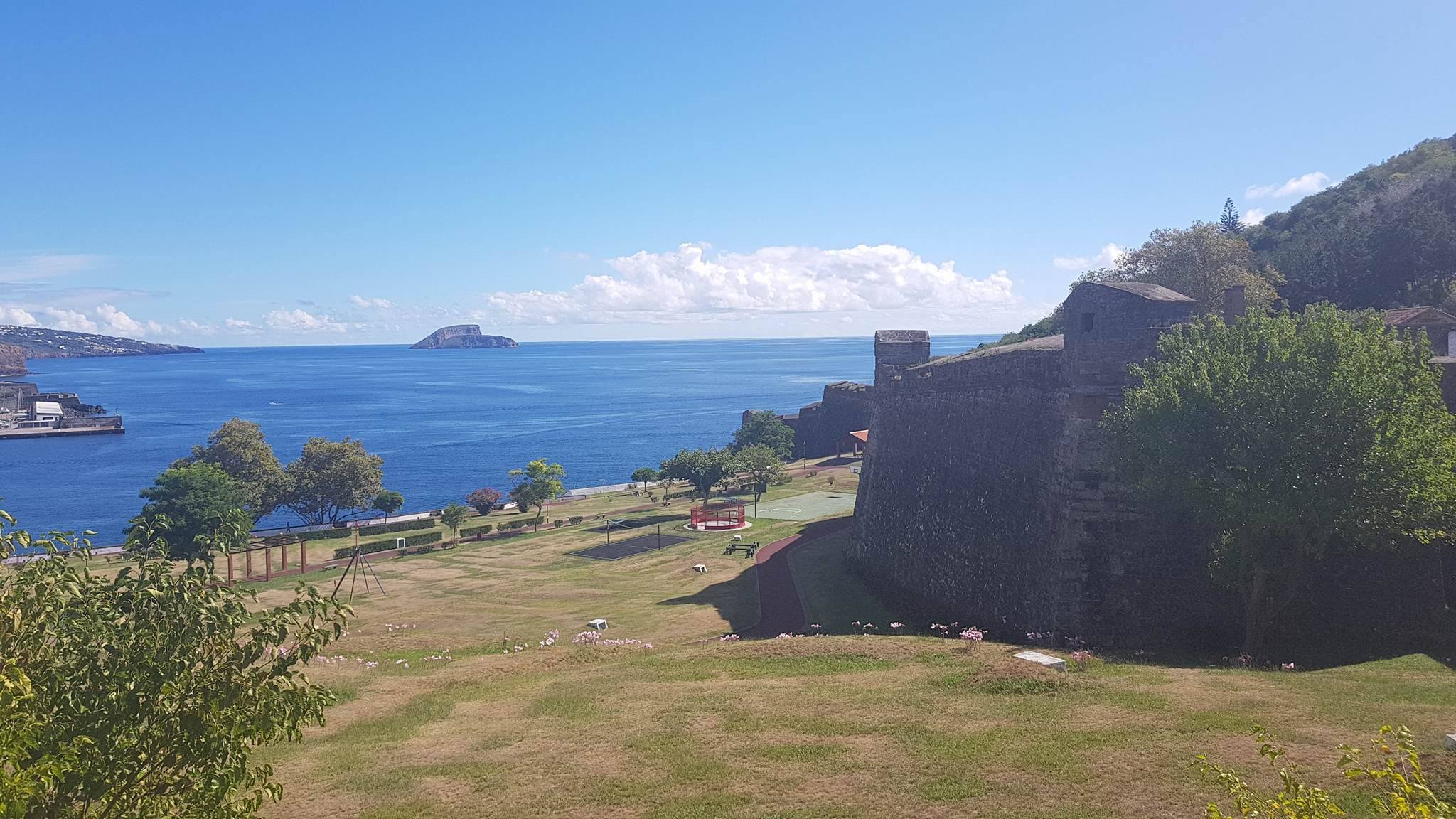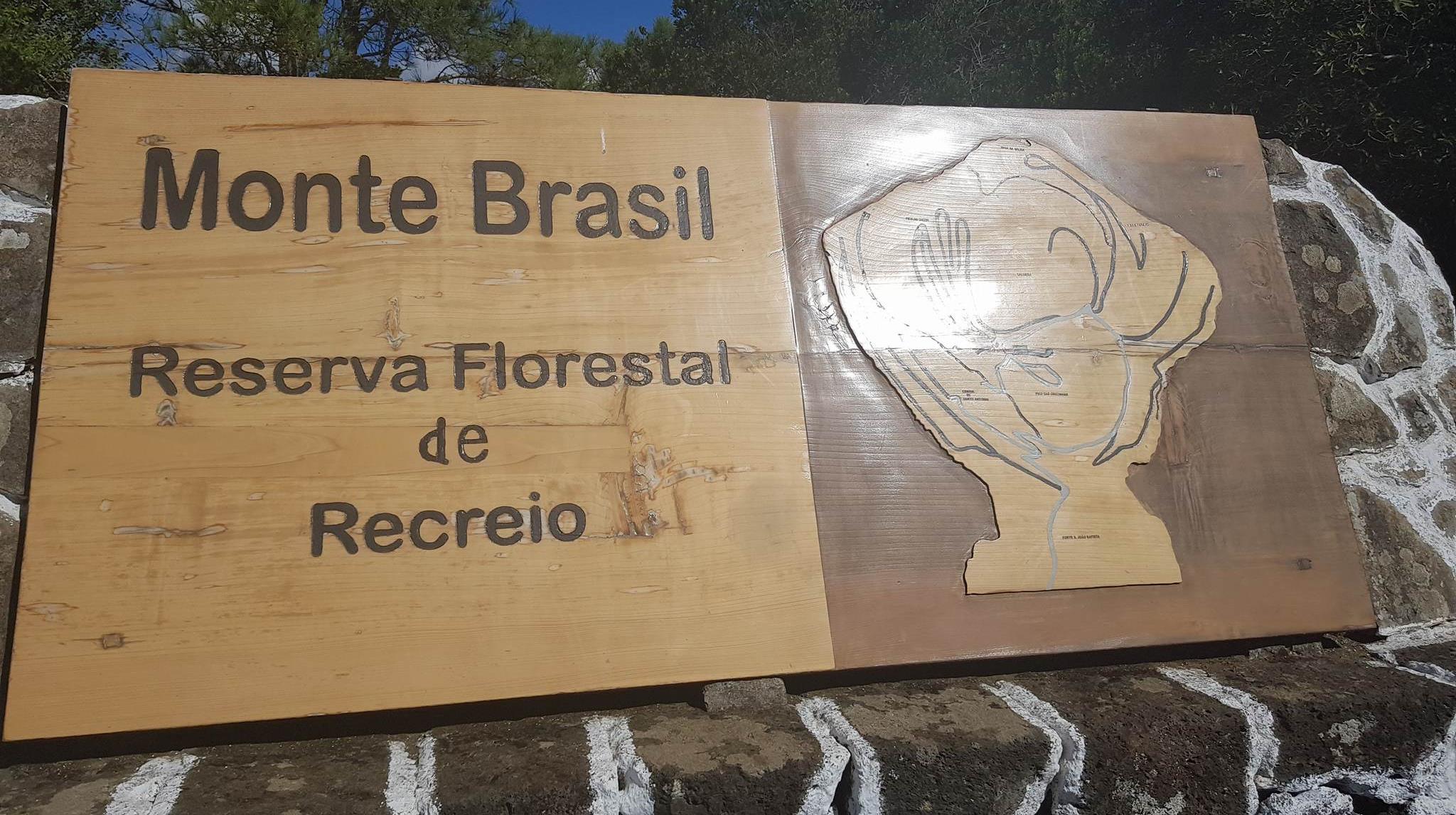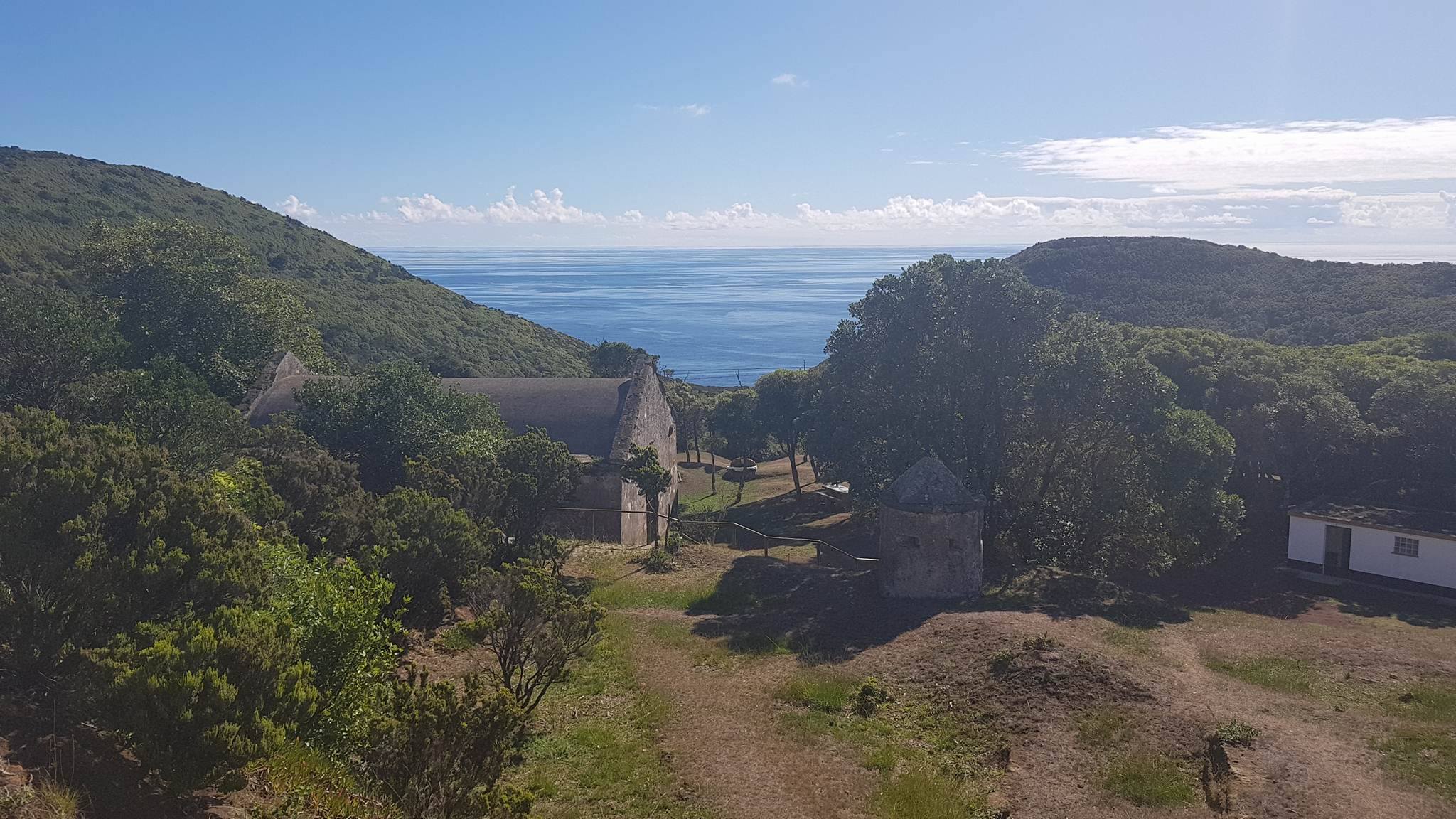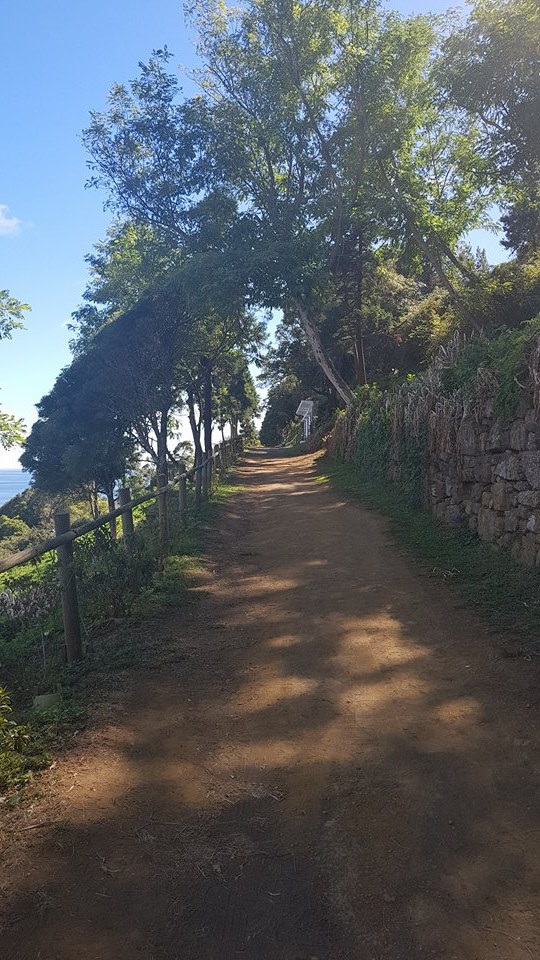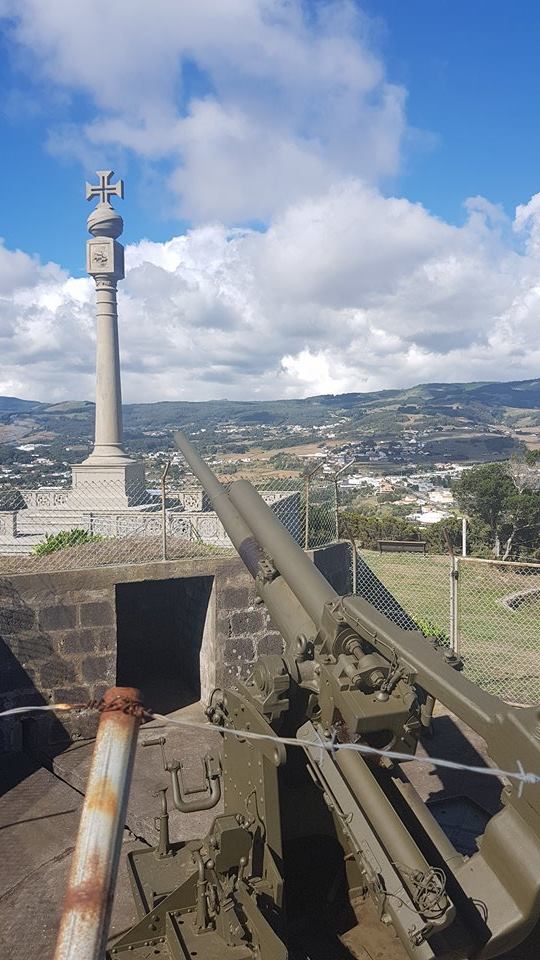Today was a very warm and hot day, a typical summer day, except the local say that this weather in Azores is not typical for October and has not been seen in decades. They blame global warning and I am just happy I get to experience Azores in this beautiful weather. So lets start with a motivating photo from today...
HR
Danas je bio vrlo topao dan, tipičan ljetni dan, osim što lokalni stanovnici kažu da ovo vrijeme u Azorima
nije tipično za listopad i nisu imali već desetljećima ovako dugo ljeto. Oni krive globalno zatopljenje, a ja sam
samo sretna što mogu doživjeti Azores po ovom predivnom vremenu. Znači počnimo s jednom današnjom
motivirajućom fotografijom...
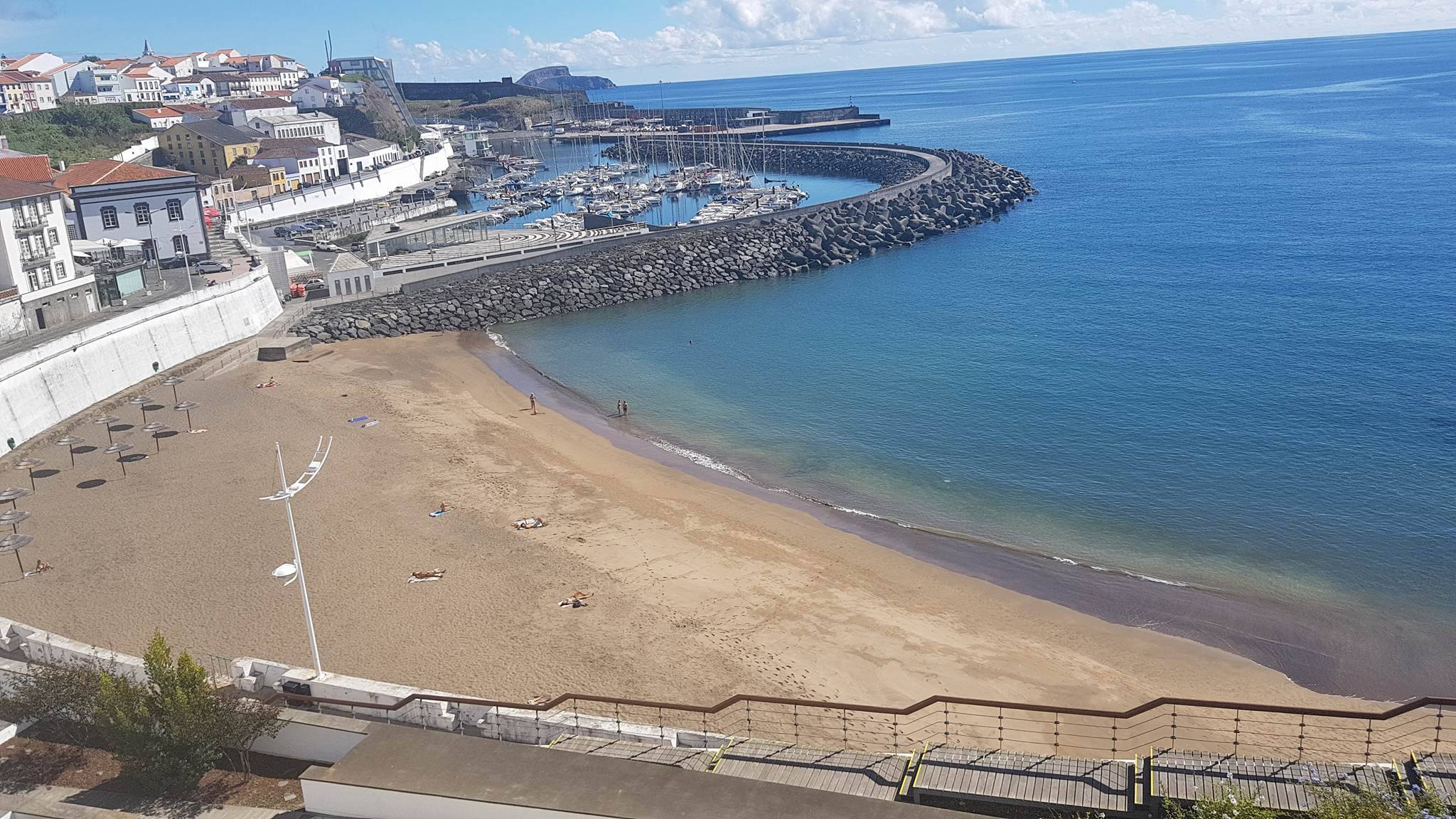
The second day of the job shadowing in Azores started out by my visit to a physics class where the students were learning about light and the electromagnetic spectrum. This was a very interesting lesson since it has been intercurricular class involving physics, chemistry, astronomy and ICT. In Portuguese curriculum, EM spectrum is taught in the 10th grade, but in Croatia 90% of the lesson can be connected to the curriculum of the 8th grade (except absorption and continuous/discontinuous spectrum). The interesting part is that the students have lessons that last 90 minutes without a break but they have 15min breaks in-between 90min classes. The science teacher Maria used a lot of different pedagogical and metodological approaches during the class: Problem based learning, experiments, ICT...
There is NO BELL at school but the students manage their own time and have to take responsibility to their schedule. Each students has their own schedule because of the classes that are optional and that the students have mandatory labs in small groups.
HR
Drugi dan job shadowing-a na Azorima započeo je mojim posjetom satu fizike na kojem su
učenici učili o karakteristikama svjetla i elektromagnetskom spektru. Bio je to vrlo zanimljiv sat s međukurikularnim
temama koje uključuju fiziku, kemiju, astronomiju i informacijsku tehnologiju. Bilo je jakooo zanimljivo.
U portugalskom kurikulumu elektromagnetski spektar učenici upoznaju u 10. razredu, dok se u hrvatskom
kurikulumu 90% ovog sata može primjeniti u nastavnom programu 8. razreda (osim apsorpcije te kontinuiranog /linijskog spektra).
Profesorica prirodoslovlja Maria koristila je tijekom sata mnogo različitih pedagoških i metodoloških pristupa nastavi: problemsko i
istraživačko učenje, eksperimente, IKT ...
Također u školi je zaposleno nekoliko laboratorijskih tehničara koji pripremaju sve potrebno za odrađivanje
demonstracijskih pokusa te rada u laboratoriju.
Zanimljivost u ovoj školi je da učenicima školski sati većinom traju 90 minuta bez odmora (postoje u nekim predmetima
i kraći 45-minutni sati), ali učenici imaju 15 minuta odmora između njih.
U školi nema zvona, te učenici upravljaju svojim vremenom i moraju preuzeti odgovornost za svoj raspored.
Svaki učenik ima vlastiti raspored zbog nastavnih sati i predmeta koji su fakultativni te učenici koji ih odaberu imaju
obvezne laboratorijske vježbe u malim skupinama.
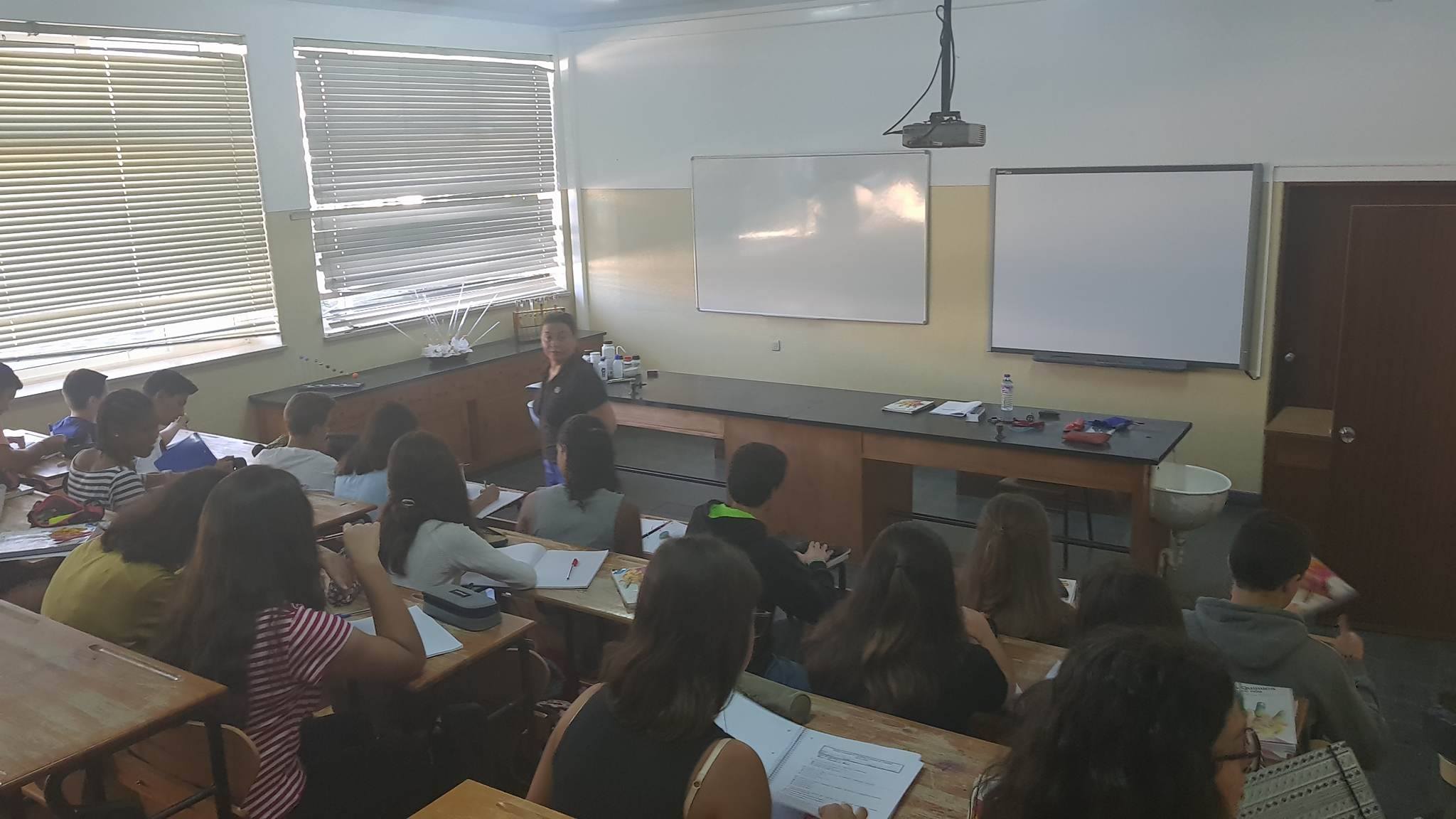
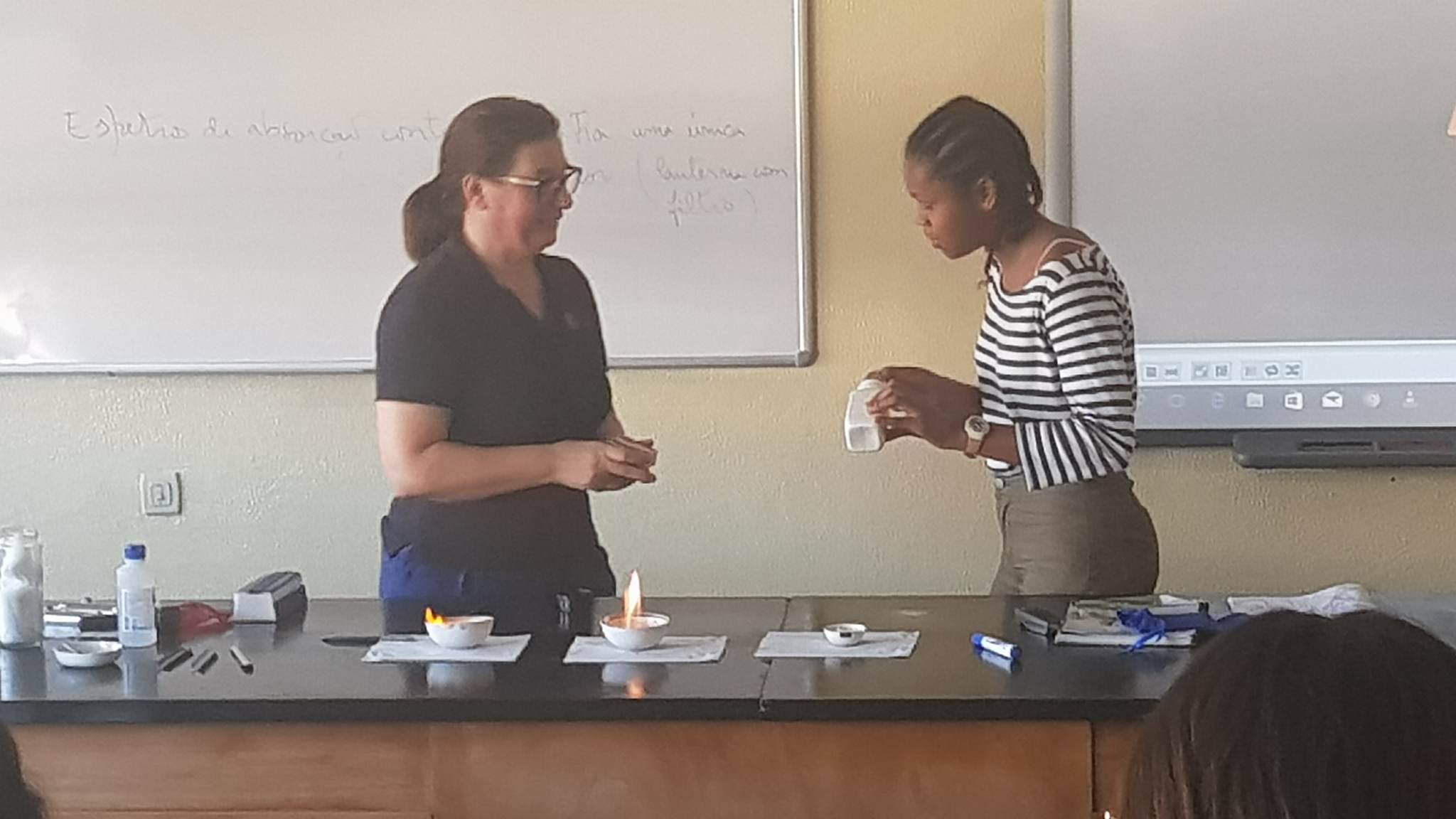
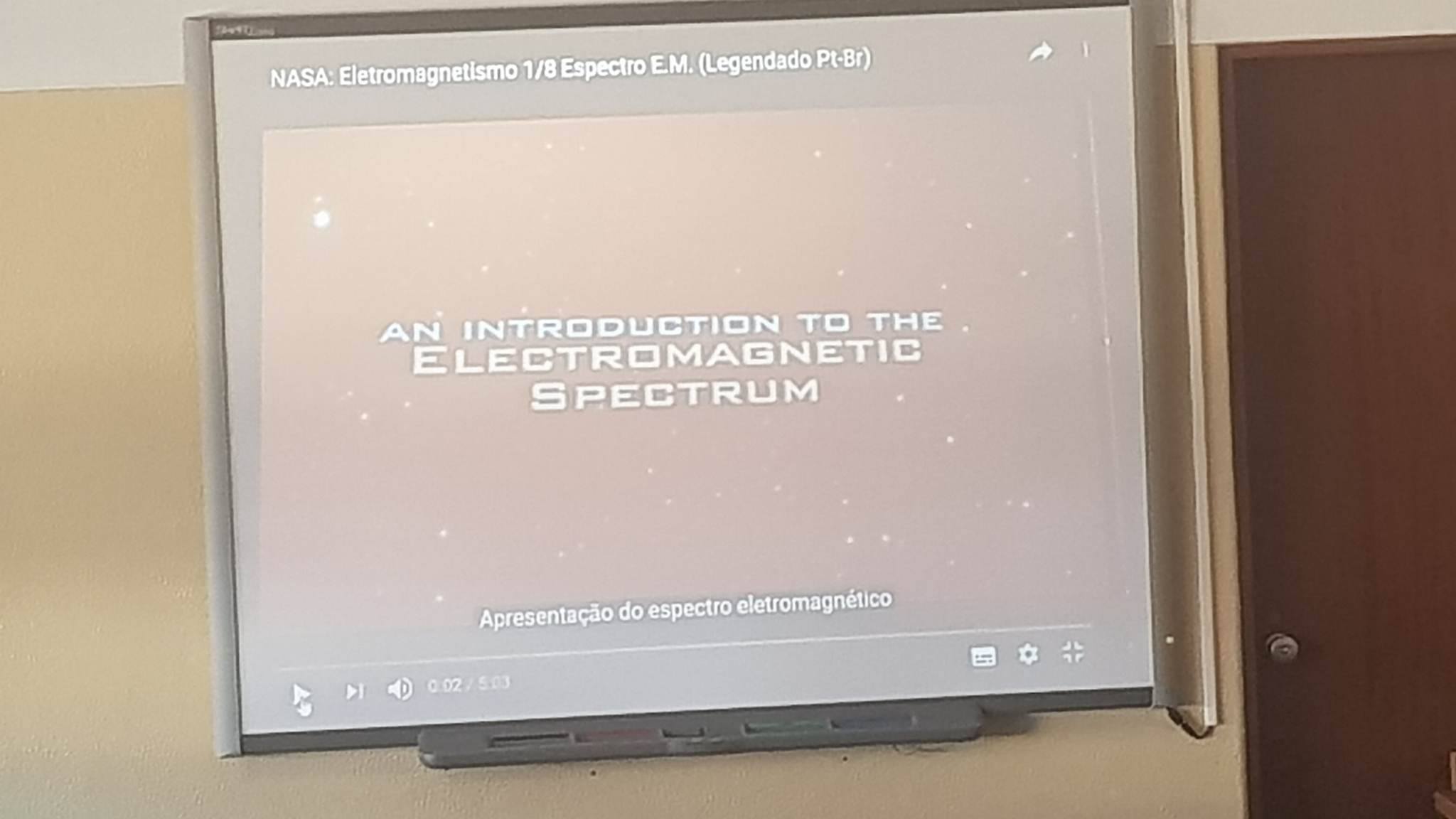
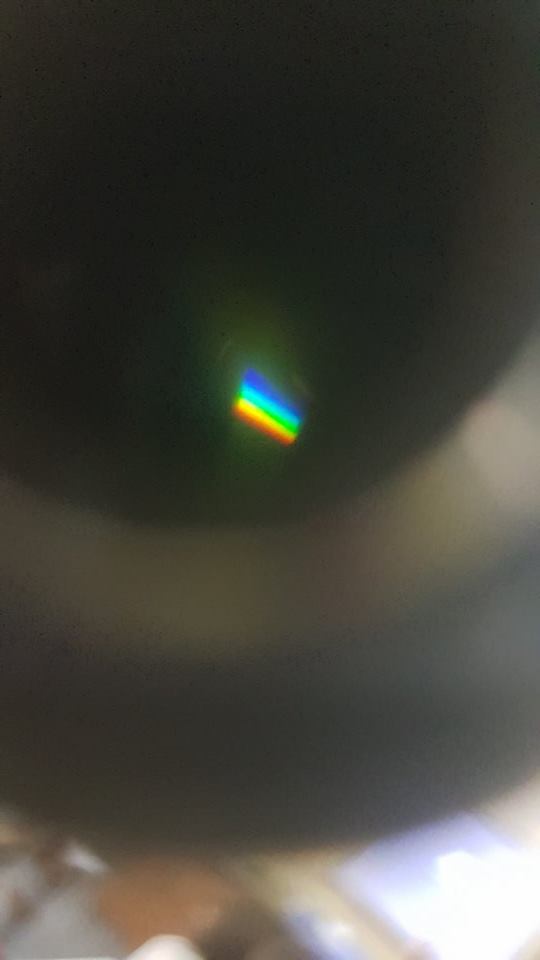
After the lesson and a short break, I attended 90 minutes long Laboratory work with the year 12 students. It was very interesting. The students were so nice and you could tell that the handle themselves as professionals in the lab. As I was told the students choose their own subjects before the school year starts according to their preferences and universities they want to apply to, so one girl told me as she wants to be Marine biologist she has taken Biology and chemistry labs. The students are very independent and take their work seriously. The atmosfhere in the class was so easy, relaxed but still everyone has been doing their part of the lab work and teacher Helena helped anyone in need as well as provided guidance to the students.
Nakon predavanja i kratke pauze, prisustvovala sam 90-minutnim laboratorijskim vježbama s 12 učenika. Bilo je vrlo zanimljivo. Učenici su bili tako dragi, pažljivi i mogli biste reći da se u laboratoriju snalaze kao profesionalci.
U razgovoru s učenicima saznala sam da prije nego što školska godina započne učenici biraju svoje predmete prema njihovim željama i sveučilištima na koje se žele prijaviti, pa mi je jedna djevojka rekla kako želi postati morska biologinja te je zato upisala laboratorijske vježbe iz biologije i kemije. Studenti su vrlo samostalni i ozbiljno shvaćaju svoj rad. Atmosfera u razredu je tako jednostavna, opuštena, no ipak su svi radili odrađivali s lakoćom svoj dio laboratorijskih vježbi, a profesorica Helena pomogla je svakom učeniku, kao i kontinuirano ih vodila kroz potrebne korake svake vježbe.
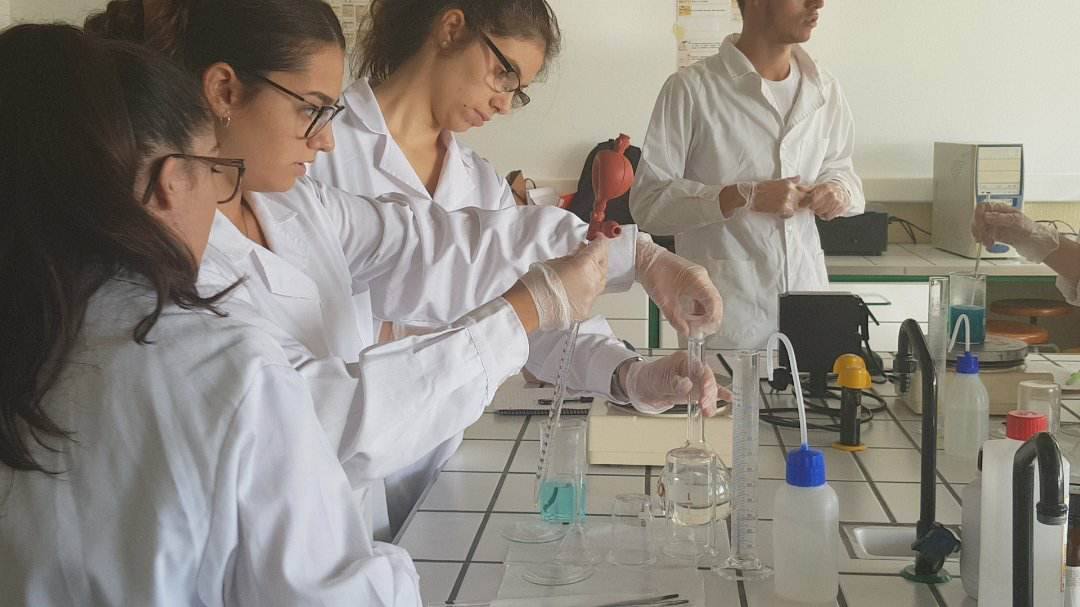
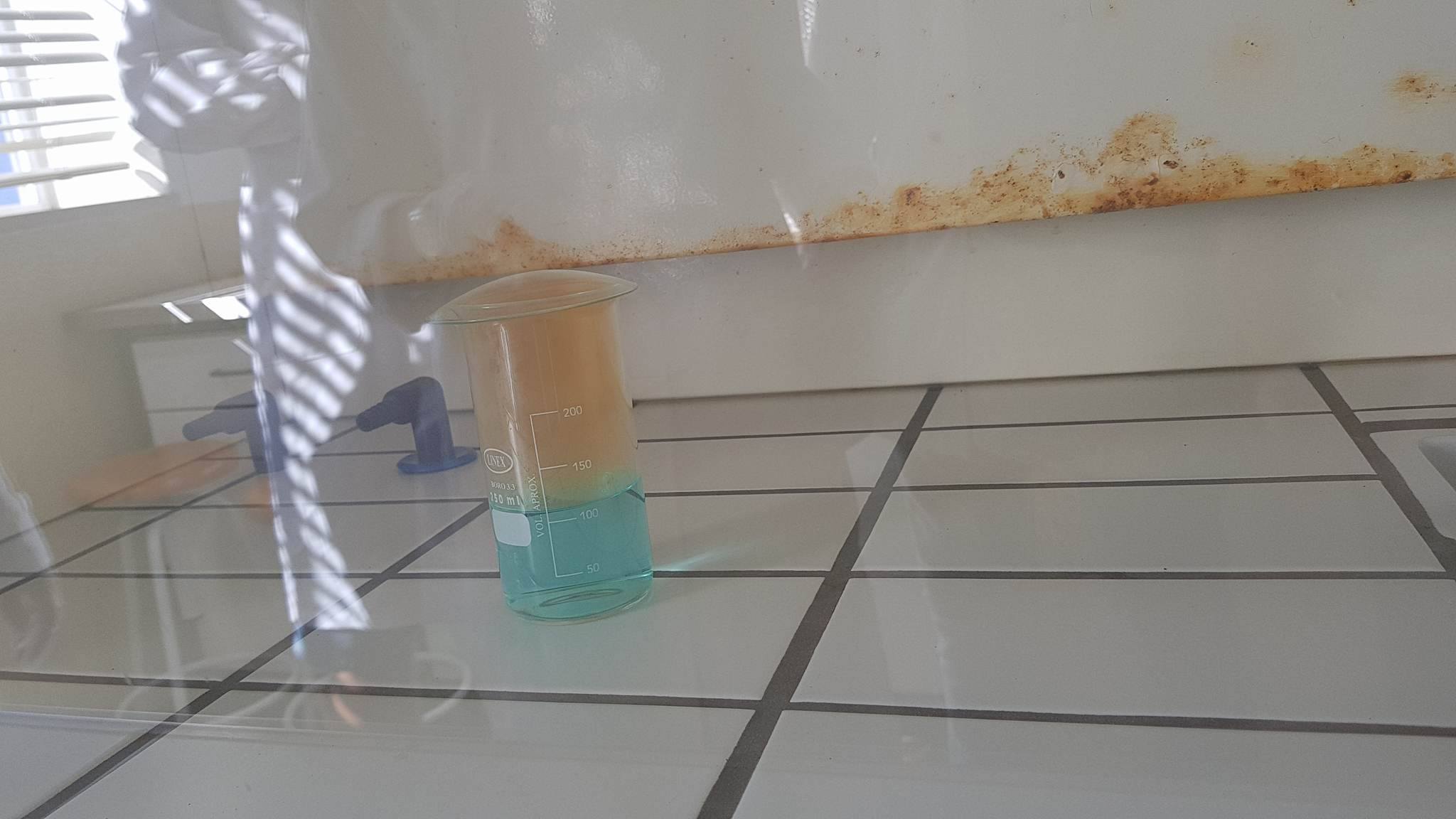
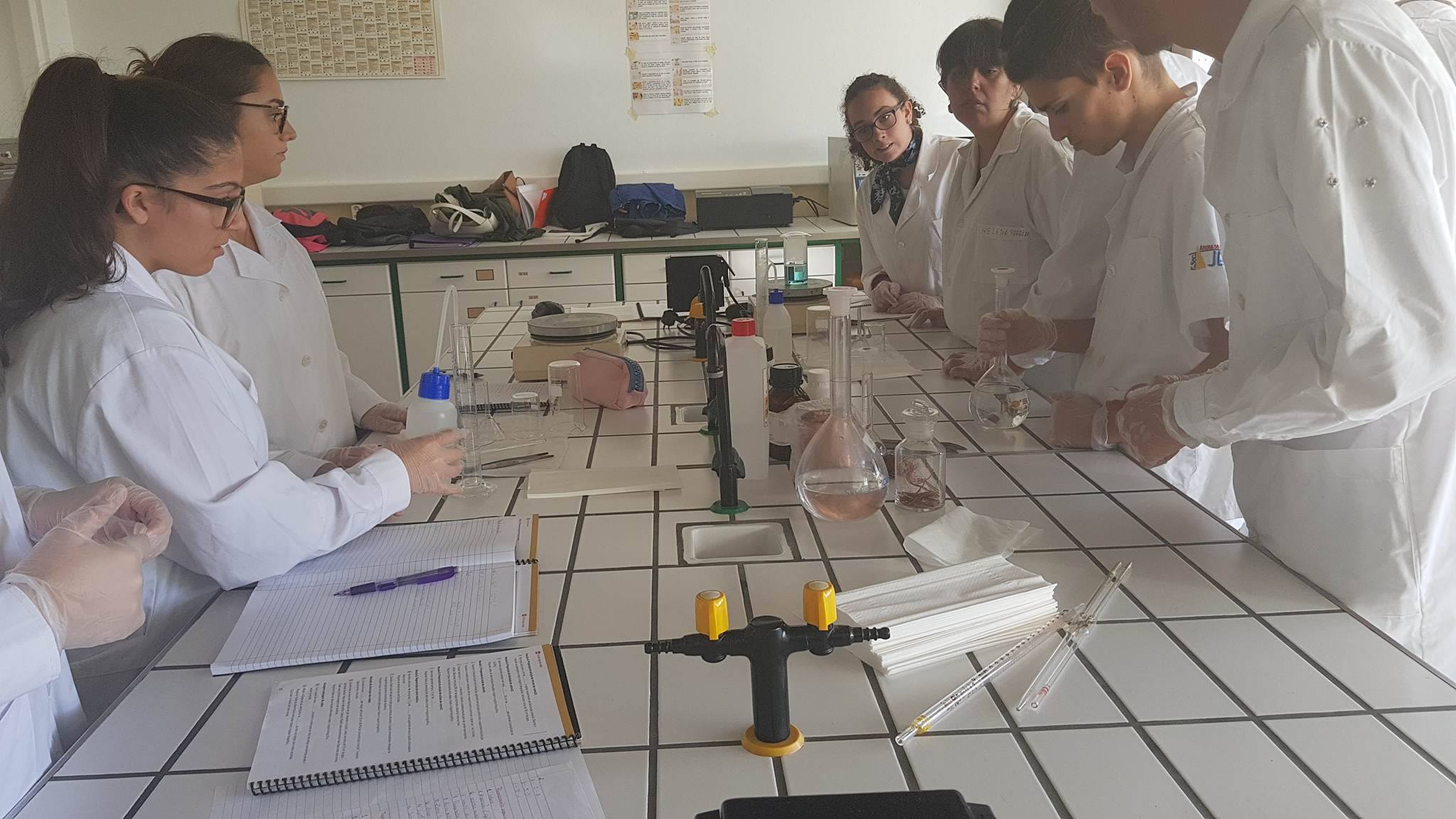
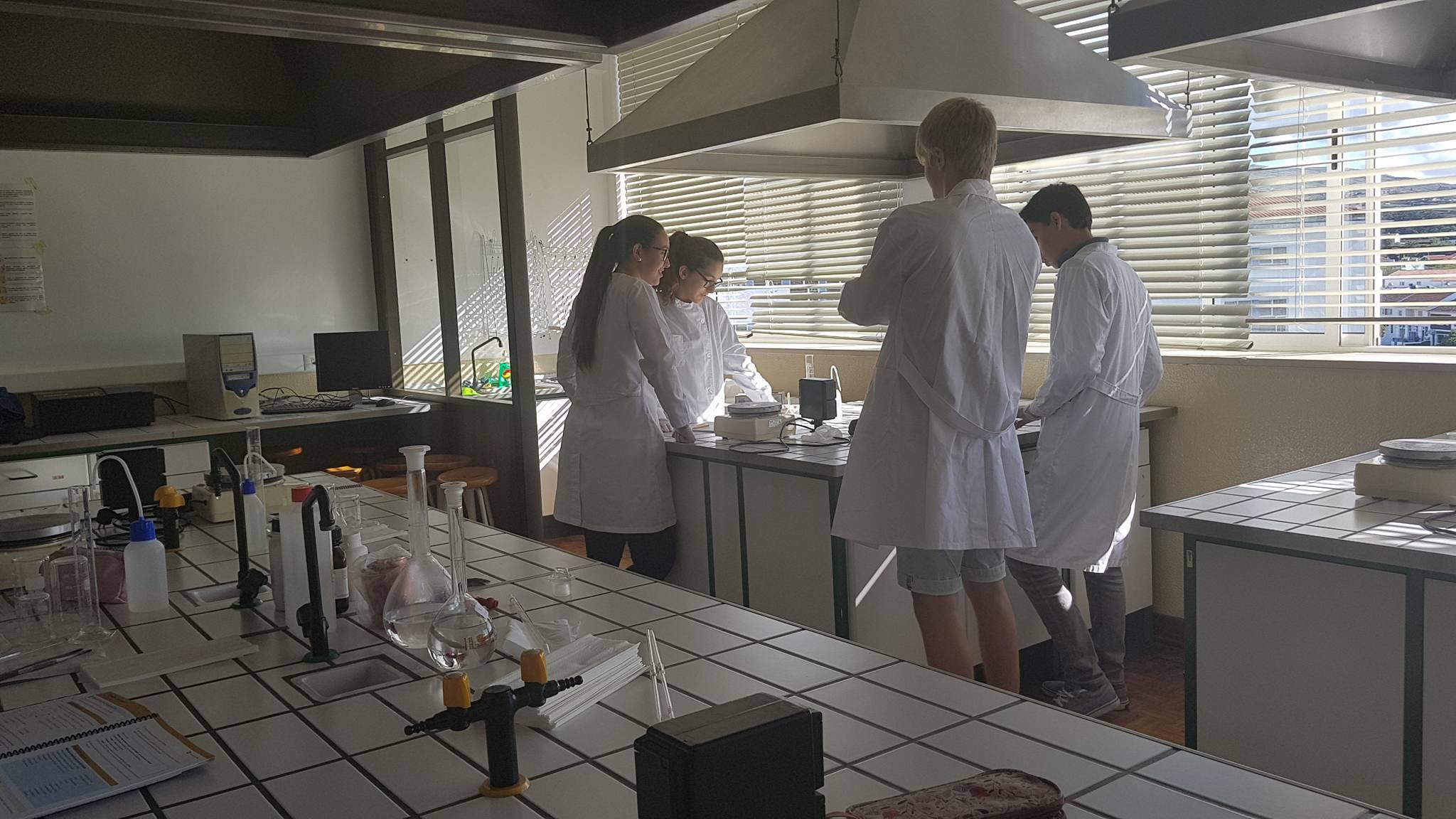
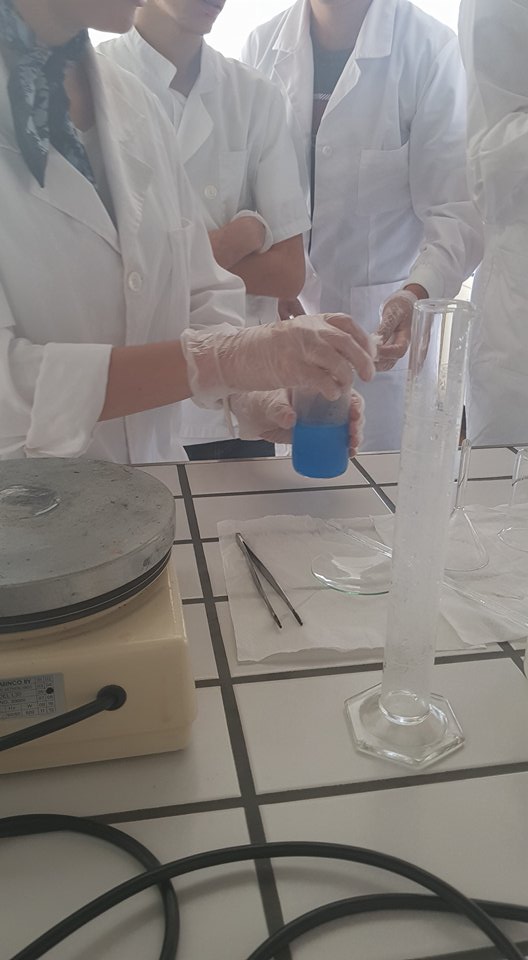
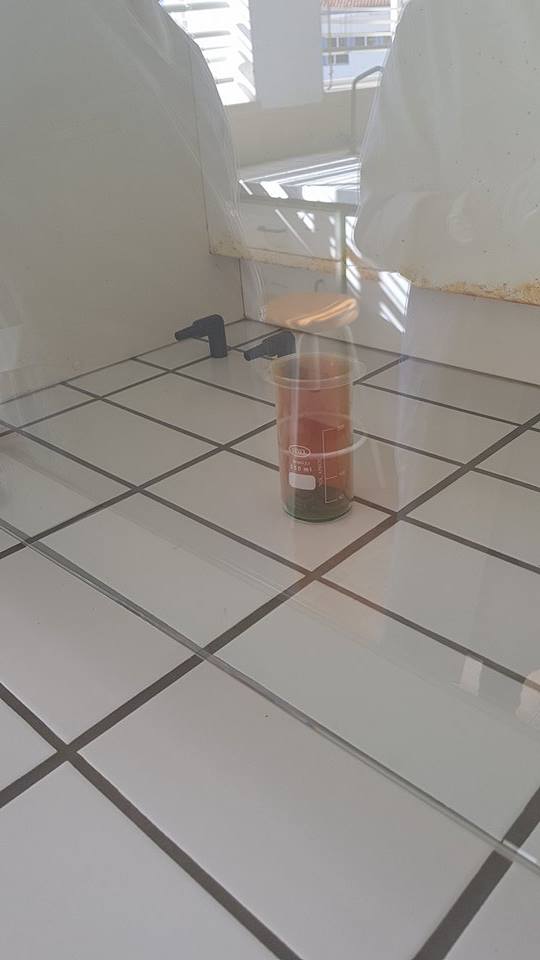
In the late afternoon we visited Monte Brasil and the Fortress of São João Baptista.
Monte Brasil is the remnants of a tuff vulcano connecting the south coast of Terceira islands, overlooking the city of Angra do Heroismo. Monte Brasil is flanked by two bays: the Bay of Angra (named for the city) to its east, and the Bay of Fanal to its west, and was used as a defensive point during the history of Angra, resulting in the construction of various forts and redoubts, including the Fortress of São João Baptista overlooking the city.
The formation of Monte Brasil was the result of various eruptions of the Guilherme Moniz volcano, a large central volcano on the island of Terceira, this difficult to identify owing to subsequent eruptions and lava flows. Although this structure is eroded, there is considerable evidence of its influence.
Kasno poslijepodne posjetili smo Monte Brasil i tvrđavu São João Baptista.
Monte Brasil je ostatak je tufa vulkana koji povezuje južnu obalu Terceire te pruža predivan pogled na grad Angra do Heroismo.
Monte Brasil je okružen dvjema uvalama: zaljevom Angra na istoku (nazvanom po gradu)te zaljevom Fanal na zapadu, a služio je kao
obrambena točka tijekom povijesti Angre, što je rezultiralo izgradnjom raznih utvrde i tvrđava, uključujući tvrđavu São João
Baptista s pogledom na grad.
Formiranje Monte Brazila rezultat je raznih erupcija vulkana Guilherme Moniz, velikog središnjeg vulkana na otoku Terceira, što je teško
identificirati zbog naknadnih erupcija i tokova lave. Iako se ta struktura gubi, postoje znatni dokazi o njegovom utjecaju.
